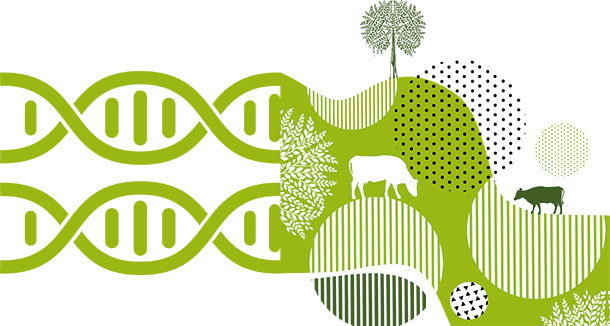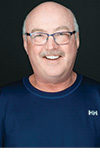Cow-calf producers must consider additional factors than what breed to buy when adding females to their herd. Cows and heifers come in all different shapes and sizes, so it’s critical to understand how they’ll fit into a specific environment with the level of available inputs.
Will their natural frame size match average forage qualities and quantities for a region? What about inputs to manage body conditioning for reproductive success? How will advancing cow age affect the answers?
Frame size, BCS and weight
“These are all great questions,” says Ron Gill, professor and livestock specialist at Texas A&M AgriLife Extension Services. “First of all, frame size and body condition scoring [BCS] aren’t overly related. Frame score is based on how tall they are; body condition score is based on how fat they are.”
He explains it’s a balance, as larger-framed cattle have a harder time maintaining their BCS under range conditions and need a higher level of nutrition to maintain body mass, even when not lactating. Smaller-framed cattle tend to have a higher BCS, as their maintenance requirements are different.
Gill says that, over time, producers have downsized frame scores but not weight. Decades ago, when continental breeds arrived, many were tall and long-legged. Now, some are shorter than British breeds but still weigh as much or more than they did years ago.
“Weight comes in two directions: up and out. If they’re wide and heavily muscled, they’re going to weigh more regardless of their smaller frame. Size can be misleading. There’s a balance of body traits we should be striving for, beginning with how cows should fit their environment.”
That’s where BCS plays a large role, says Gill. In areas producing high-quality forage, a larger-framed cow can have her nutrient requirements met and maintain a BCS of 5 to preserve a higher rebreeding rate.
“Five on the BCS scale is about the break point between acceptable and unacceptable reproductive performance,” Gill says. “It’s a little different with younger females. I like to see a BCS of 6 on them because they have added requirements for growth; plus they also start lactation. I often say we need to pack a little sack lunch for them as they go into their first lactation.”
To complicate matters, cattlemen may make decisions depending on whether they own forage and pasture or lease on a per-acre or per-female basis. These facts change the dynamics. Gill believes even when superior forage quality is available, smaller-framed cattle are not wasting an opportunity, as total pounds weaned per acre will increase. Weaning weights on an individual basis won’t rise, but smaller calves also bring more per pound than larger calves.
“It’s not a simple situation,” admits Gill. “Sometimes we don’t listen to home economic signals in the livestock industry, and we get chasing weaning weight thinking we get more pounds per cow. We are, but are we running as many as we could or producing as many pounds per acre as we should?”
Moving the goalposts
K.C. Olson, professor of range beef cattle nutrition and management, and the W.M. and F.A. Lewis Distinguished Chair in the department of animal sciences and industry at Kansas State University, says while location and climate are important, production cycles can be built to fit almost any environment.
“I believe it’s 80 to 85 percent of this equation,” says Olson. “Cows tend not to do very well when we make them lactate and forage is scarce and of low quality, regardless of how physically suited they are to their environment. We could look outside the box a little, take another animal and allow her to calve and reach lactation on green grass. Her performance and ability to hold BCS improves by an order of magnitude. How we arrange our production cycles is probably the most critical thing to reduce costs and make cattle fit the environment.”
He deems a seasonally appropriate calving season vital, right alongside a seasonally appropriate weaning season. Work done at Kansas State and the University of Nebraska clearly showed pushing lactation into a time of low forage quality was costly for BCS.
“This doesn’t mean fall of the year. With warm-season native grass, we can lose a BCS score every month. On cool-season grass, Nebraska work showed a decline of a BCS score every six to eight weeks.”
Genetics as a tool
Brad Johnson, beef genetics director at Genex Cooperative Inc., says genetics works in partnership with frame size and body conditioning.
“The cow herd is really the result of genetics, which is our bull and our replacement heifer selection. Plus, the environment, or how the females are developed and fed annually. Those are the factors, and they absolutely need to match.” He explains maintaining a balance is crucial, and farmers and ranchers need to monitor their cattle from start to finish. Input costs must be calculated as growth traits are incorporated.
Although he values genetics, he encourages a combination with an experienced eye test. “I think genomic information needs to be coupled with good cow sense. They should be sound, with growth potential, easy fleshing and muscle. Using this recipe will take breeding programs light years ahead of traditional selection.”
Getting BCS back on track
Olson adds that sometimes adjustments and tweaks need to be made to increase BCS. In his experience, the best time to replace energetic efficiency is during the 100 days following weaning. Pregnancy is at an early stage and lactation has ceased. Reconditioning attempts during the last 60 days of gestation or 60 days of lactation face too many competing metabolic priorities.
“If we’re trying to get her to add bodyweight during this time, we’re fighting an uphill battle,” Olson stresses.
It’s never as simple as making sure there’s enough feed or buying the right genetics for the climate and region.
“Everything ties together; a lot of factors depend on each other and work collectively,” Olson says. “Ultimately, cows need to be reproductively efficient, so it really comes down to how well they hold their body condition without nutritional intervention.”







